(Updated with New Tips for 2wd Vs 4wd) High Roll Center Vs Low Roll Center – Roll Center Tuning Simplified – Tips on Roll Center – links for RC Roll Center
This site contains affiliate links. When you click links, Especially with the word (Ad) you Help the site Grow. The site may receive a commission, at no additional cost to you!
Please send Feedback – Click on Links – Social Share… To help the sight Grow!!!
Table of Contents
Tools to consider #1
Digital Caliper
- Any brand will work
- Help get your camber link (aka roll-center) Accurate
- Also go for other measurements like shock length
Losi Ride Height Gauge
- Lower in price vs. other names brands
- Work with 1/10 and 1/8 RC cars
- Easy to use and read
Stick on Weights
- Helps lower CoG (if you mont low)
- Adding weight makes car more stable but slower
- Helps car with high roll center - with less weight transfer - you might need to add weight to the rear or outside part of the chassis (like in a right-hand turn add weight to the right-side of the car to get more weight to the outside tire).
- Helps car with low roll center - with more weight transfer - adding weight to the front can help keep grip to the front wheels - also adding weight to the inside of the chassis (like in a right-hand turn add weight to the left-side to keep more pressure on the inside tire).
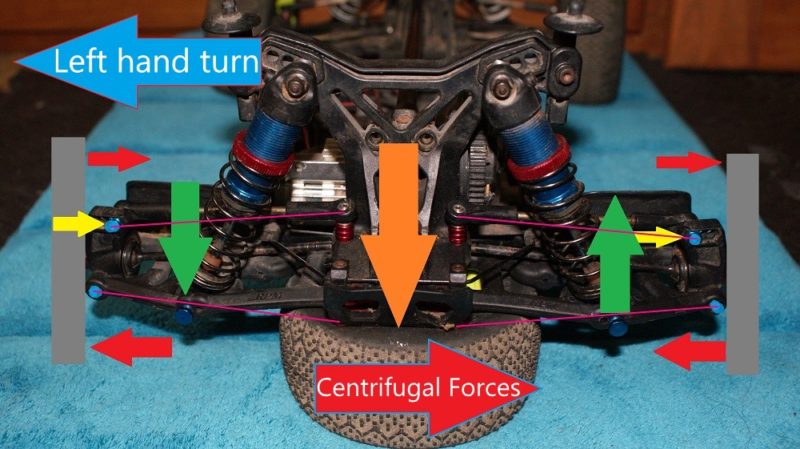
Low Roll-Center
- Makes the car sluggish.
- Car rolls more.
- More consistent feel.
- More tire on the ground.
- The mass is lower in a fast turn.
- Less max pressure on tires.
- Even pressure on the tire.
- Good for long sweeping turns.
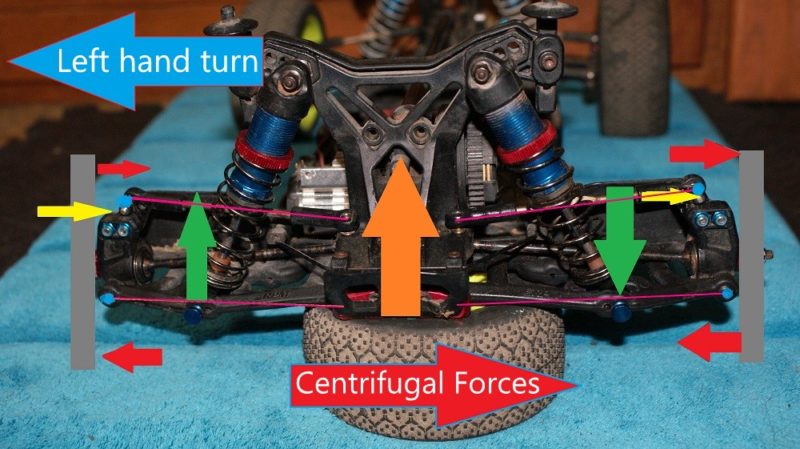
High Roll-Center
- More pressure on the outside tire – giving more initial grip.
- When the pressure on the tire becomes too high, you get an inconsistent snappy feel (out of control).
- For example, like having too much anti-squat or a car with too much weight in the rear…you have tons of grip but when it slips, it slips hard, and usually hard to get it back under control.
- Good for tight turns (high or low grip).
Low roll Center Vs High
With a low roll center – you have more even contact on all tires and more pressure on the inside tire. Since the chassis is being pushed down – your weight is lower. So it sounds like this is the best… but there is one big problem why it’s not always the best. (initial pressure on the outside tire is less with low roll center)!!! This makes the car feel sluggish. also, to gain a lower roll center, most of the time you lose camber gain and the tire will want to roll onto the sidewall. For this, there is a fine line between getting the best from both worlds.
2wd Vs 4wd Roll Center
2wd – Turning roll-center for 2wd (Rwd) VS 4wd (Awd) can be very different. In 2wd cars – usually, you want to make the front less twitchy (Low Roll-Center) or a neutral Roll-Center will help. If you need more response in the front – slowly move the roll-center up. For the rear – the best way to drive a 2wd is to keep your momentum up in the corners. For this, you want the roll-center to be a bit higher than the front. This will help push the outside rear tire down giving more side bit and forward acceleration on power. If you find you can’t rotate the rear on-power (usually from too much grip) – first try increasing your front roll-center to get a bit more responses and (2nd) if you need even more rotation from the rear – lower the roll-center in the rear (you might need to run a higher spring rate for the increased roll).
For 4WD you’ll usually find you want a high roll-center in the front. The more aggressive driving style of the 4wd makes the car roll more and this helps keep it upright. It also gives the benefit of pushing the front outside tire down giving more forward grip, but if you run too much roll-center – the need to run a tighter (thicker oil) front diff, if not the inside tire will rob your power and acceleration. For The rear – much like the 2WD, moving the roll-center up for more aggressive driving (like 180 turns, s-turns, heavy braking to make turns, hard acceleration out turns, etc…). On tracks where you need to smooth out the car (making the car less twitchy), you will want to go down on roll-center (but like on top you might need a stiffer spring and or a thicker swaybar to stop roll).
Low Roll-Center Demonstration

(green arrow = force on arms) (Blue dots = hub pivot points) (Orange arrow = force on chassis)
In the picture, you will see an example of a Low roll-center. In turn, the “first” forces are applied to the bottom of the wheels (bottom red arrows).
The bottom hub pivot points act like a seesaw (bottom blue dots). giving the top hub pivot points opposite force (top blue dots).
Now, the top right hub pulls on the camber link. trying to force the link straight (right yellow arrow). the result is pushing the right A-arm up (right green arrow).
The top left hub is pushing on the link (left yellow arrow), trying to force the left A-arm down (left green arrow).
This pushes the chassis down.
High Roll-Center Demonstration

(green arrow = force on arms) (Blue dots = hub pivot points) (Orange arrow = force on chassis)
Basically the same applies to the picture as before. But in this case with a high roll-center.
When the top right hub pulls on the camber link (right yellow arrow), forcing the link straight like before, it now pushes the right A-arm down (right green arrow).
The top left hub is now pushing the link (left yellow arrow), trying to force the left A-arm up (left green arrow).
This pushes the chassis up.
More on Roll Center
www.serpent.com – Roll Center Understood
www.sodialed.com – RC Tuning Guides for Roll Center
www.rctech.net – Understanding and Tuning Roll Center
www.rcscrapyard.net – RC Car Roll Center Explained
www.competitionx.com – RC Suspension Tuning Guide- Roll Center
The Ultimate Guide to RC Roll Center Tuning: Boost Your Racing Game with These Pro Tips
If you’re an RC racing enthusiast, you understand the importance of every tweak and adjustment when it comes to getting the best performance out of your car. Roll center tuning is one of the most important factors that affect your car’s handling, stability, and overall speed. In this ultimate guide to RC roll center tuning, we’ll take you through everything you need to know, from the basics of roll center theory to the advanced techniques used by pro racers. Whether you’re a beginner looking to improve your skills or a seasoned veteran seeking that extra edge, these pro tips will help you take your racing game to the next level.
Understanding Roll Center and Its Impact on Vehicle Handling
Before we dive into the specifics of RC roll center tuning, let’s first understand what roll center is and how it affects your car’s handling. Roll center is the imaginary point around which your car’s chassis rolls when it’s cornering. The roll center height determines how much your car will roll when it’s cornering. The higher the roll center, the less your car will roll, and the lower the roll center, the more your car will roll.
When your car rolls, the weight distribution of the car changes, affecting the amount of grip each tire has on the track. This can lead to understeer or oversteer, which can affect your car’s stability and handling. If you want to improve your car’s performance, you need to understand how to adjust the roll center to suit your driving style and the track conditions.
To adjust the roll center, you need to change the height of the suspension arm pivot points. The easiest way this can be done is by adjusting the angle of the upper arm link.
Importance of Roll Center Tuning in RC Racing
Roll center tuning is critical to RC racing because it affects your car’s handling and stability. If you get the roll center wrong, your car may be difficult to drive, leading to poor performance on the track. On the other hand, if you get the roll center right, your car will be more stable, have more grip, and be easier to drive, leading to better lap times and improved overall performance.
Generally, if you’re racing on a track with tight corners, you want your car to have a high roll center, which will reduce the amount of body roll, keeps the car more responsive, and avoid traction in most turns. On tracks with high-speed corners, you may want a lower roll center to improve your car’s on-throttle steering, soak up bumps in turns, and can help save you from traction rolling when applying power and initial entry.
Rephrase the traction rolling – with lower roll center the car will want to traction rolling more but hitting the gas (the harder you hit the gas the more the effect) the chassis will pull down saving you from a complete roll-over. where high roll center stops roll making it hard to roll-over but if the car starts to get on two wheels it’s harder to save.
Roll center tuning is not a one-size-fits-all solution, and you need to take into account the track conditions, your driving style, and your car’s setup to get the best results. It’s important to experiment with different roll center heights to find the sweet spot that works best for you and your car.
Pro Tips for Successful Roll Center Tuning
Now that you understand the basics of roll center theory and its importance in RC racing, let’s look at some pro tips for successful roll center tuning.
Tip #1: Start with the basics
If you’re new to roll center tuning, it’s essential to start with the basics. Experiment with different roll center heights to see how they affect your car’s handling. Start by adjusting the front and rear roll centers independently and see how your car behaves on the track. Once you have a good understanding of how the roll center affects your car’s handling, you can move on to more advanced techniques.
Tip #2 Driving Style
Aggressive drivers (mostly use the outside lane to go fast) tend to run a lower roll center for you need to be harder on the gas to gain the advantages of a lower roll center. on the other hand – Conservative drivers (usually use the inside lane to go fast). you know the drivers that look slow but are still getting fast laps – tend to run a higher roll center to help keep the car more locked – like in slower turns, off, and neutral power.
Tip #3: Consider the track conditions
As mentioned earlier, the track conditions play a crucial role in determining the optimal roll center height for your car.
Tip #4: Make small adjustments
When adjusting the roll center, it’s essential to make small changes and test your car on the track. Making large adjustments can lead to unpredictable behavior and poor performance on the track. Make small adjustments to the roll center and test your car’s handling. If you’re happy with the results, make another small adjustment and test again. Repeat this process until you find the sweet spot for your car.
Tip #5: Keep good records
As you experiment with different roll center heights, it’s essential to keep good records of your adjustments and their effects on your car’s performance. Keeping a logbook of your setup changes and lap times can help you track your progress and identify trends. It can also help you make informed decisions when it comes to future adjustments.
Roll Center Tuning for Different Track Conditions
As mentioned earlier, the track conditions play a crucial role in determining the optimal roll center height for your car. Here’s a quick guide to roll center tuning for different track conditions:
Tight corners
For tracks with tight corners, you want a high center to reduce body roll and improve stability. This will help keep your car hold the inside line on the track.
High-speed corners
For tracks with high-speed corners, you may want to lower the roll center. This will help keep your car rotate more, allowing you to carry more speed through the corners. You may need to make further adjustments to find the sweet spot.
Mixed tracks
For tracks with a mix of tight and high-speed corners, you’ll need to find a balance between a low and high roll center. You may need to experiment with different roll center heights to find the sweet spot that works best for your car and driving style.
Conclusion
Roll center tuning is an essential skill for any RC racing enthusiast. With the right adjustments, you can improve your car’s handling, stability, and overall speed. By understanding the basics of roll center theory and following these pro tips, you can take your racing game to the next level. Remember to experiment with different roll center heights and keep good records of your adjustments to track your progress and make informed decisions. Happy racing!
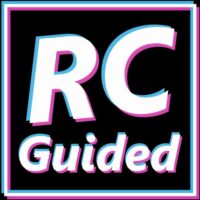
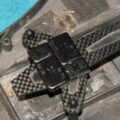
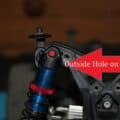
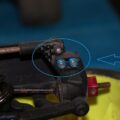
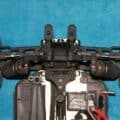
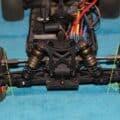

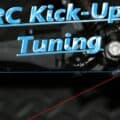
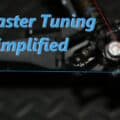
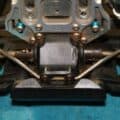
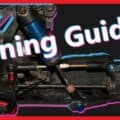
Pingback: Tuning With Camber Links (Simplified) | RCGuided